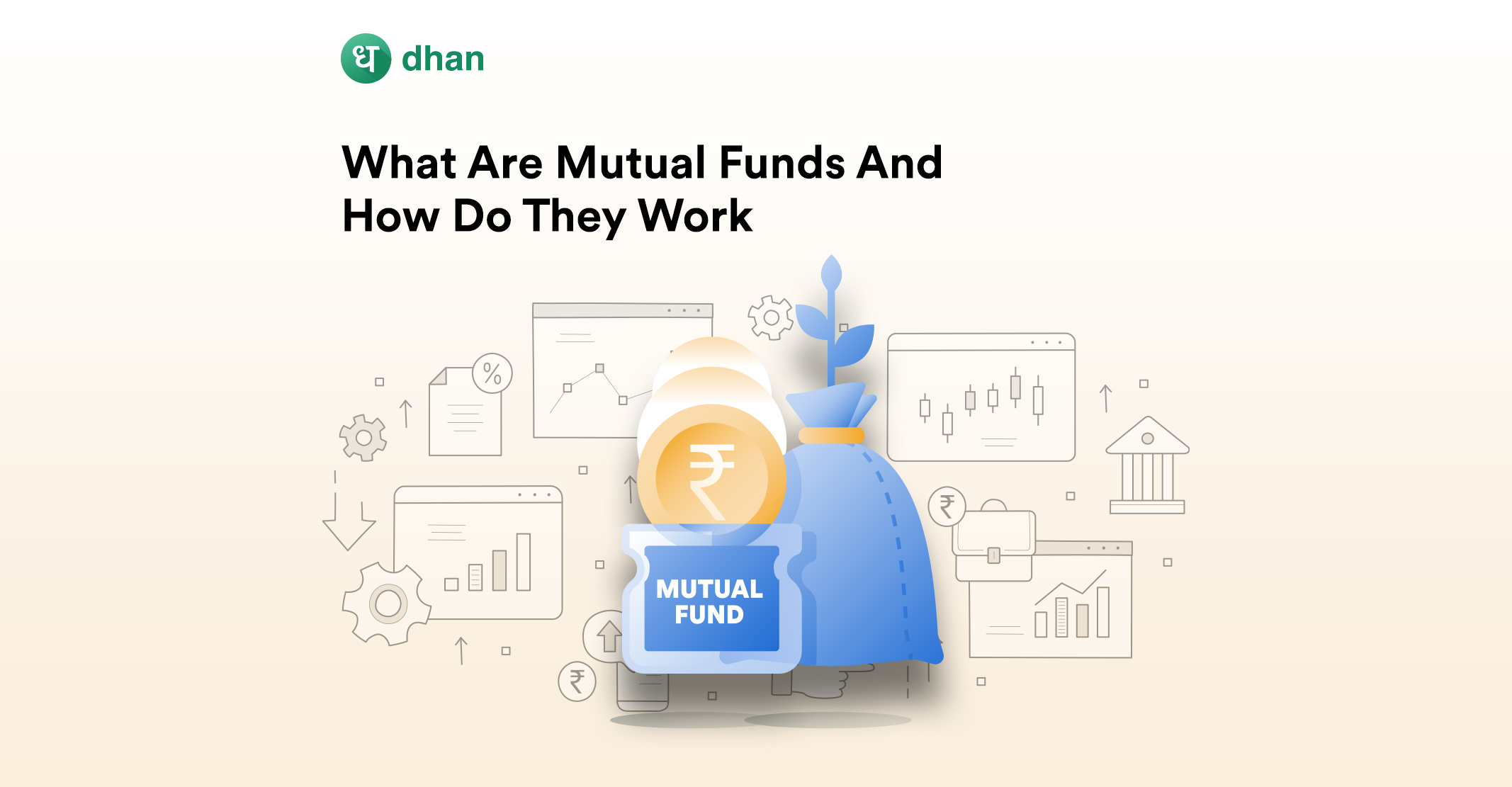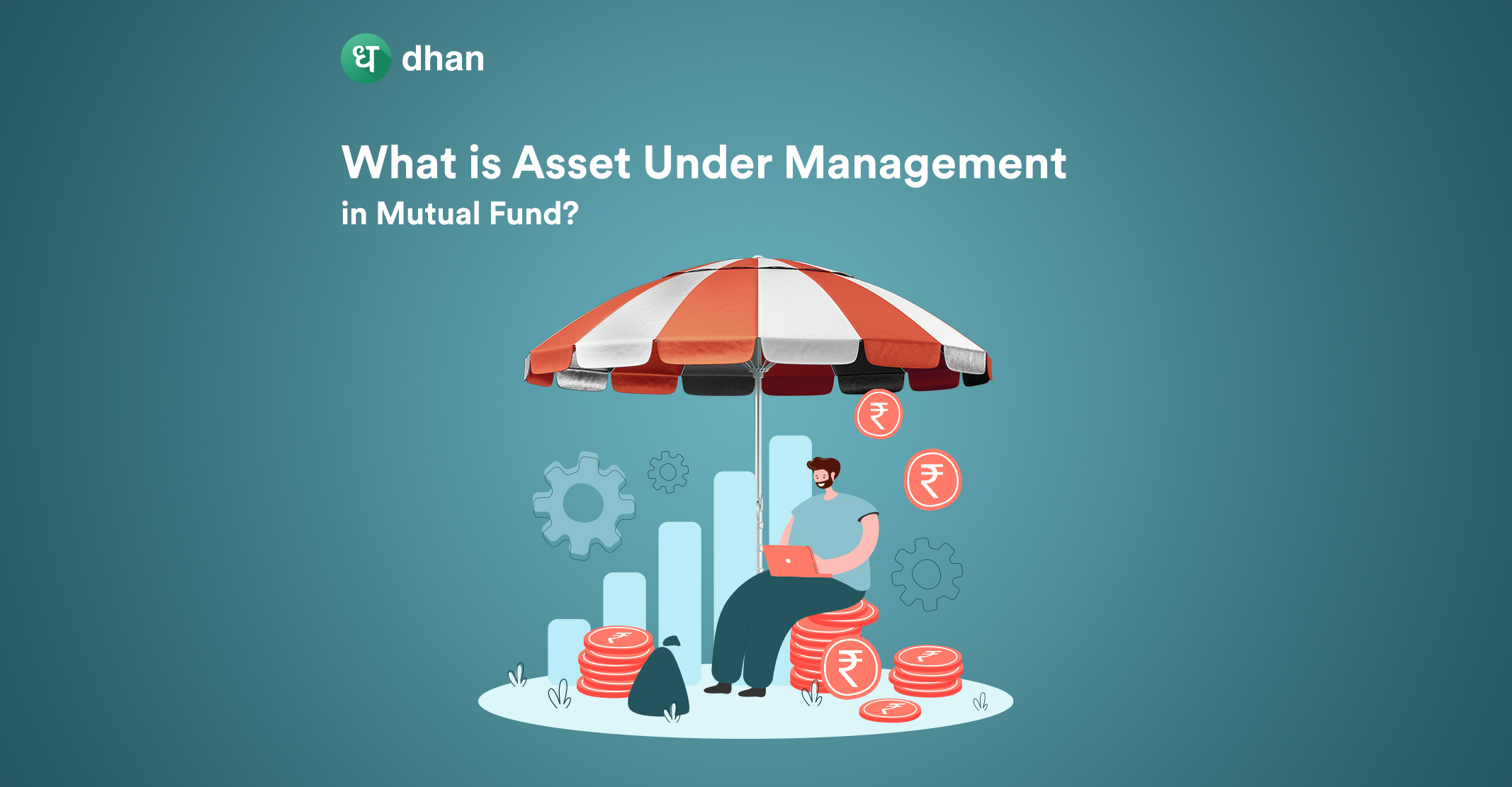The stock market can be a complicated place for those who don’t have the time to keep up with it. However, the markets offer one of the best ways to create wealth for long-term goals.
These two points are conflicting and often confusing for many investors. That’s why mutual funds exist.
In fact, investing in mutual funds can be as lucrative as buying shares directly, which brings us to the question – what are mutual funds and how do they work?
What is a Mutual Fund?
A mutual fund is a diversified basket of stocks, bonds, ETFs, and other instruments managed by a professional team of financial experts.
The experts handle the buying and selling of all financial instruments, taking away the burden of research from everyday investors.
This convenience is one of the primary reasons why people invest in mutual funds.
In fact, mutual funds obtain their capital from hundreds and thousands of investors who bank on convenience for generating long-term returns.
That’s why mutual funds are known as pooled investments which manage lakhs or crores of rupees. The term for this pool is “Asset Under Management”.
Considering the amount of money involved, there is a head fund manager for every mutual fund.
They manage the team of financial analysts and strategize to ensure that the fund stays true to the investment objective. To achieve the investment objective, a fund can be managed in two ways:
- Active: The fund manager & team buy and sell every day, week, or month
- Passive: The fund manager & team replicate an index and let the assets do the work over the long run
While no mutual fund guarantees anything, the returns are often decent. But the returns are dictated by the type of asset class the mutual fund invests in along with the investment objective.
Take any mutual fund in India and you’ll notice that it will invest in equity, debt, or a combination of both.
As you may already know, equity as an asset class has the potential to generate better returns than debt.
The reason? Debt instruments generate fixed returns whereas equity instruments have no ceiling for returns over the long run.
Just look at the comparison of 2-year returns generated by India’s largest company by market capitalization and the bond with the highest yield in India:
- Reliance Industries: 27.95%
- SIB Corporate Bond: 12.50%
The logic behind choosing the right financial instruments rests in the investment objective. A long-term fund will likely go for equity whereas a short to the medium-term fund will lean on debt.
How a Mutual Fund Works with Example
By now, you must’ve understood what mutual funds are. They’re pooled investments managed by experts who diversify the money across equity, debt, or both.
Now’s the right time to dig deeper into the inner workings of mutual funds. Let’s make things interesting by taking two examples – one fun and the other much more traditional.
Example #1
Meet Mr. Baker who works for Yummy Bakers. He’s a baker who’s famed for making the best cakes in the neighborhood. But his services come with a catch – he will make the cake but only with crowdfunding.
The money for the cake has to be supplied by the residents of the town. Making cakes on your own can be challenging.
The town’s residents know this – that’s why they rely on Mr. Baker – and are ready to pay money for it.
Mr. Baker gauges the interest of the townspeople and finds out that almost everyone is ready to fund the cake-making activity. After all, everybody loves cake!
One fine morning, Mr. Baker announces that he’s ready to make the cake of the century and is willing to accept the townspeople’s funding.
Most of the townspeople oblige and so it begins, Mr. Baker gets all the money to make his cake. If you’ve baked before, you’d know that it takes a lot of ingredients and tools to make a cake.
One wrong move and the cake can turn to pudding! That’s why Mr. Baker takes his time to carefully construct a recipe that has eggs, flour, sugar, cream, and much more.
Lucky for the townspeople, Mr. Baker does end up baking the cake of the century – everybody gets a piece based on their contribution.
Of course, Mr. Baker takes a cut too but not from the cake but from the townspeople’s money.
This entire analogy can be used to break down the lifecycle of a mutual fund:
- Yummy Bakers: AMC
- Mr. Baker: Fund manager
- Townspeople: Investors
- Announcement: New Fund Offer
- Crowdfunding: Pool of money
- Ingredients: Financial instruments
- Cake: Mutual fund
- Pieces of cake: Returns
- Mr. Baker’s Cut: Management fees
We’ll use this analogy in a traditional sense to explain the end-to-end working of a mutual fund with the next example.
Example #2
A mutual fund is offered by an Asset Management Company, popularly known as AMCs. Every AMC is a company that’s often affiliated with another financial institution, typically a bank.
For example, there’s HDFC AMC, SBI AMC, and many more. Every AMC has multiple mutual fund schemes that are headed by fund managers and their team of financial experts.
These experts design the investment objective of the fund and pick the assets that the fund will invest in to achieve the goal. Once all of this is set, the AMC takes the mutual fund to the NFO stage.
Just like stocks list on the market via an Initial Public Offering (IPO), AMCs offer mutual funds to the public for the first time via a New Fund Offering (NFO).
The NFO works on a subscription basis where investors can get in at the offer price. This is also the period when money starts pooling into the mutual fund.
Once the NFO period ends, the mutual fund will move to the live market, much like a stock on the secondary market. The mutual fund is live and is at the mercy of the markets.
Its price will rise and fall based on various factors, typically depending on the assets it has invested in. This price, by the way, is known as the Net Asset Value (NAV) – the money required to buy one unit of the mutual fund.
After an investor buys units of the mutual fund, they can choose to exit whenever (if it’s an open-ended mutual fund) but at a price – this is known as the expense ratio or management fees.
Exiting a mutual fund is known as “redemption” or “redemption of units”. Thus, this is how mutual funds work in India:
- AMC announces mutual fund
- Mutual fund is open for initial investment (NFO)
- NFO works on a subscription basis
- NFO allows a mutual fund to pool money
- After NFO ends, the mutual fund is live for everyone
- Investors can buy mutual funds at NAV
- Investors can exit by paying fees
Now that you’ve understood how a mutual fund works, it’s time to move on to the various different mutual funds available for investors.
Want to know about the leading AMCs in India? Read this blog: Top 5 AMCs in India
Different Types of Mutual Funds in India
You must’ve realized by now that the term “mutual fund” is used to collectively describe a vast array of pooled funds that invest in various assets, in various ways, for various timeframes.
This part of the blog will break down various different types of mutual funds that you can invest in India, starting from mutual funds that are categorized based on the asset class they invest in.
Types of Mutual Funds Based on Asset Class
An asset class contains financial instruments that are similar in behavior and regulation. In India, these are the 4 kinds of mutual funds based on asset class:
1. Equity Funds
- Equity funds invest in stocks and ETFs
- May invest in foreign stocks or indices
- Carry potentially high returns
- Used for long-term goals
2. Debt Funds
- Invest in bonds issued by the government and corporations
- Bonds generate a fixed interest rate
- Bonds have varying maturity (short to medium-term)
- Carry potentially decent returns
- Used for short to medium-term goals
3. Money Market Funds
- Invest in highly liquid money market instruments
- Are a type of short-term debt fund
- Money market bonds mature in upto 1 year
- Carry potentially decent returns
- Used for short to medium-term goals
4. Hybrid Funds
- Invest in equity and debt instruments
- Look to balance the risk of equity with debt
- Carry potentially solid returns
- Used for medium to long-term goals
While these are the 4 types of funds based on asset class, there’s one more type – target date funds – that’s popular in the US and other countries but hasn’t caught on in India yet.
Target-date funds have everything to do with retirement – the funds invest in other assets, including stocks and mutual funds, based on retirement and post-retirement goals.
Fun Fact: International funds invest in stocks and mutual funds of foreign countries but are treated as debt funds during taxation.
Types of Mutual Fund Schemes Based on Management
Remember how we spoke about the two styles of management in the section “What is a Mutual Fund?”. Those two styles will make another appearance again.
Mutual funds can be managed in two ways: active or passive. Active management in mutual funds means that the fund manager will be highly involved in the buying and selling of financial instruments.
Sometimes, they may sell monthly or yearly. Other times they may make changes only when an instrument falters or doesn’t help the fund meet its investment objectives.
On the other hand, passive management in mutual funds takes a laid-back approach. The fund manager will create a portfolio once, often replicating an index like Nifty 50.
The composition of the mutual fund will be more or less the same as the index it is replicating. As a result, the fund manager won’t be actively involved in the management of the fund.
The following table compares active vs passive investing in mutual funds.
| Metric | Active Mutual Funds | Passive Mutual Funds |
| Style | Aggressive | Laid Back |
| Expense Ratio | High | Low |
| Returns | High | Low-Medium |
Types of Mutual Fund Schemes Based on Objective
Every mutual fund has an objective tied to it. All mutual funds work towards satisfying the objective.
We’ve discussed the various ways and styles in which the funds work towards their goals.
Let us now discuss the goals themselves. Here are the three types of mutual funds based on investment objectives:
1. Growth
Growth mutual funds invest in stocks that are primed for growth through capital appreciation. To achieve this objective, the mutual fund may invest in risky stocks that have a bright future.
2. Income
Income mutual funds focus on investing in assets that can generate a consistent income through dividends or interest payments. This includes debt and equity funds.
3. Liquidity
Mutual funds that focus on liquidity invest in assets that are highly liquid, meaning that they can be converted into cash easily. Liquid funds and overnight funds are typical examples of this.
Types of Mutual Funds Based on Structure
In both our examples from the section about “How a Mutual Fund Works”, investors could exit their investment at any point in time. This is possible in open-ended funds.
More importantly, this brings us to the next type of mutual funds – the ones based on structure. There are two main types in this category:
1. Open-Ended Funds
You can invest in an open-ended mutual fund at any time. That’s not all. Open-ended mutual funds allow you to redeem your investment at any time as well.
2. Close-Ended Funds
A close-ended fund has a pre-determined number of units for sale, which, if exceeded means that no new investor can invest in the mutual fund.
Furthermore, there may be stipulations on when you can sell the units you own.
By the way, there’s one more type of mutual fund based on structure. It is known as an interval mutual fund.
3. Interval Funds
Much like close-ended funds, interval funds only allow you to buy or sell units during a specific period. This period may be monthly or yearly depending on the fund.
Demat vs Physical Mutual Fund
You must be a mutual fund expert by this point! Congratulations on making it so far (if you’ve read the entire blog). Here’s another amazing fact – you can hold mutual funds in physical form.
Or, you could hold them in a demat account just like stocks and ETFs. When you buy mutual funds in the physical form, they’re recorded, settled, and held through the AMC’s Registrar and Transfer Agents (RTAs).
When you buy mutual funds in the demat form, it is held through the Depository Participant. This has an advantage because you can pledge these mutual funds to get more margin for trading.
Advantages & Disadvantages of Mutual Funds
| Advantages of Mutual Funds | Disadvantages of Mutual Funds |
| Low starting amount | Too many scheme variations |
| Expert management | Low to high expense ratio |
| Potentially solid returns | Tax inefficiency |
Should You Invest in Mutual Funds?
Mutual funds are a pool of money managed by experts that diversify the capital across multiple financial instruments. They offer a slow and steady way to generate wealth for long-term goals.
What mutual funds aren’t is a get-rich-quick scheme. As they say, wealth creation is a marathon – not a sprint. This saying is true for mutual funds as well.
That’s why you need to choose mutual funds based on your financial goals and risk appetite. Moreover, there are fees and taxes involved in mutual funds, much like any other financial instrument.



